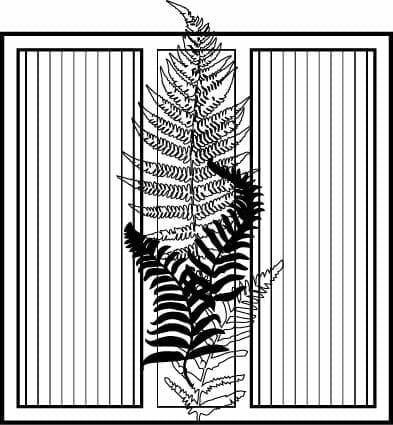Biophilic design, feng shui, and art all share a common goal: to create spaces that promote balance, harmony, and well-being.
Biophilic design is an approach to architecture and interior design that incorporates elements of nature into the built environment. This can include things such as natural light, plants, water features, and materials that mimic natural textures. The idea behind biophilic design is that people have an innate connection to nature, and that being surrounded by natural elements can improve our physical and mental health.
Feng shui is an ancient Chinese practice that focuses on the flow of energy (or “chi”) in a space. The goal is to create a harmonious balance between the built environment and the natural world. Feng shui practitioners believe that the placement of objects and furniture, as well as the use of colour and other design elements, can affect the flow of energy in a space and thus influence the well-being of the people who live and work there.
Art is another important element in creating spaces that promote balance and well-being. Different styles of art can evoke different emotions and create different moods, and the choice of art can greatly impact the overall aesthetic and energy of a space.
When these three elements are combined, they create a holistic approach to design that can have a powerful impact on our physical, mental and emotional well-being. Biophilic design provides a connection to nature, feng shui ensures the flow of positive energy, and art adds beauty, emotions and cultural meaning to the space.
Incorporating natural elements, paying attention to the flow of energy, and carefully selecting artwork can create spaces that are not only beautiful and functional but also promote balance and well-being. A space that incorporates these three elements will not only be aesthetically pleasing but will also have a positive impact on the health and well-being of the people who use it.
Walls of Eden is on a mission to make advancements within architecture and interior design, to promote the principles of Biophilic design and Feng shui through beautiful pieces of ‘art’ that create a physical and mental connection with people and the spaces they inhabit.

A scene from a recent film I’ve watched, beautifully illustrates the loss of connection with the natural world around us. The Rock Scene in the film ‘Everything, Everywhere, all at once’ allows viewers to find two minutes of peace in the chaos of the rest of the film. It highlights the stillness of our planet without human existence and that we are just “Small, stupid humans”. Insufficient to the size of the universe, and with new discoveries within science we forever get smaller.
With all this said, it is easy for the daily activities of human life to be chaotic and overwhelming, introducing the individual to stress and tension.
Creating environments for people, allowing them to enjoy 2 minutes of peace from the chaos, is fundamentally the design ethos of Walls of Eden.
Beyond peace, and beauty, Walls of Eden seeks to instil a sense of happiness and calm.
Wall of Eden products would enable the person to appreciate a state of joy by appreciating the intricacies of art, which in a world of fast pace consumerism would be welcomed by many.
Walls of Eden also promotes the numerous benefits of Biophilic Design. Benefits being:
Improved air quality
Biophilic design incorporates natural elements such as plants and water features, which can support purifying the air and remove toxins. This can lead to improved respiratory health and a reduced risk of allergies and other air-borne illnesses.
Reduced stress levels
Being surrounded by nature has been shown to have a calming effect on the mind and body. Biophilic design can promote a sense of tranquillity and reduce stress levels, leading to improved mental well-being.
Increased productivity
Studies have shown that exposure to nature can improve focus and concentration, leading to increased productivity in the workplace.
Improved physical health
Biophilic design can also have a positive impact on physical health. For example, exposure to natural light has been linked to improved sleep patterns, while access to green spaces has been shown to reduce the risk of obesity and other health issues.
Increased sense of community
Biophilic design can also foster a sense of community by creating shared spaces that encourage social interaction and connection.
Increased creativity and inspiration
The natural elements incorporated in biophilic design can evoke feelings of inspiration and creativity, leading to more innovative thinking and problem-solving.
Increased sense of well-being
Overall, biophilic design can promote a sense of well-being by promoting balance and harmony between the built environment and the natural world.
Better connection to nature
Biophilic design also encourages people to connect to nature, which can promote a more sustainable lifestyle and a more positive attitude towards the environment.
When looking at the benefits of Biophilic design, the positive flow of energy of Feng Shui, and the emotional response of Art. Collectively there is a great symbiotic relationship. Together they synthesise human and earth friendly spaces by utilising nature to heal the body, mind and spirit. Ultimately Walls of Eden would project us to bloom within in our spaces.

Next: Our Systems
